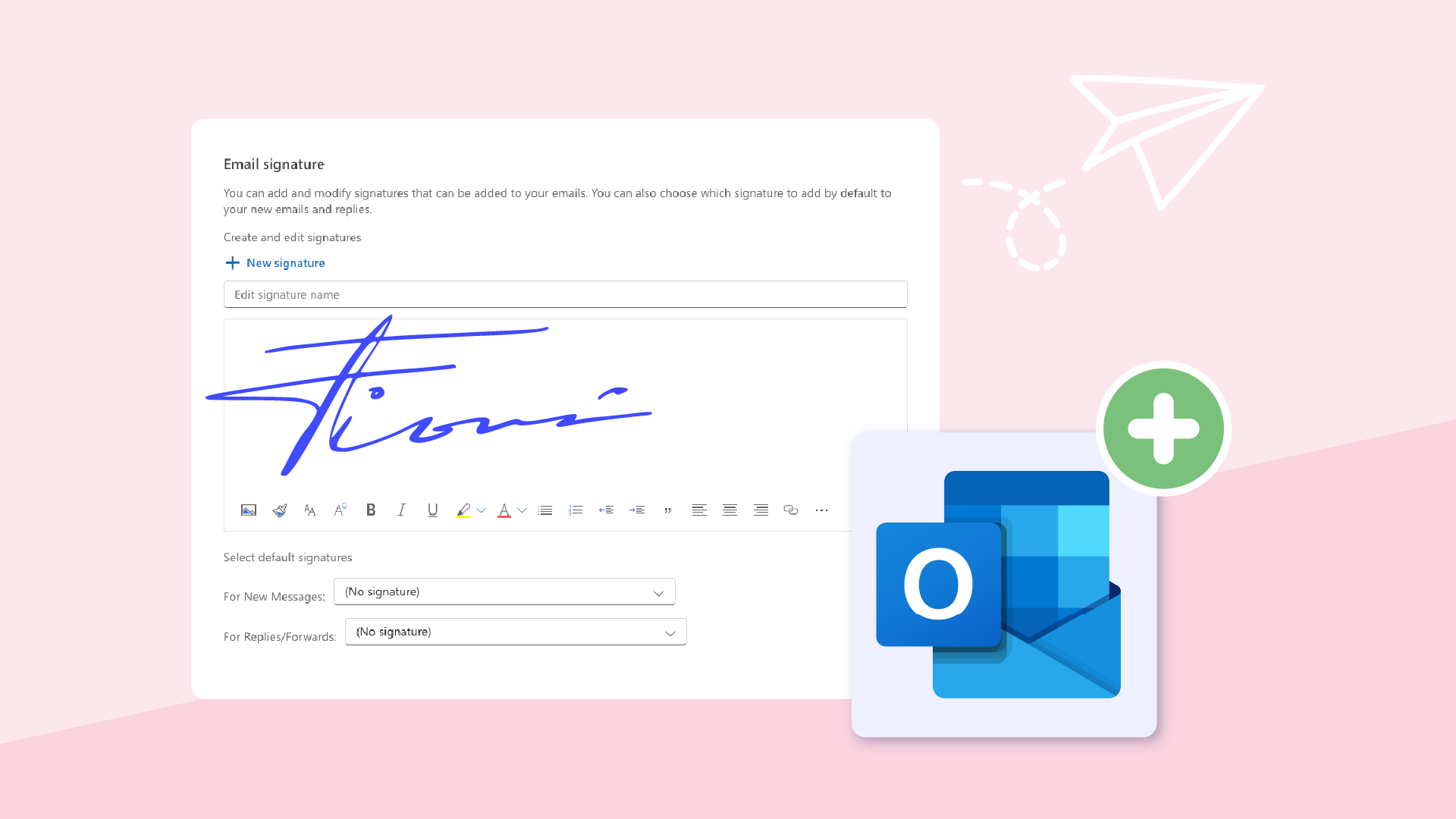

Have you ever signed off an email with nothing but your name? Who are we kidding? Of course, you have!
There's nothing really wrong with that – it's just a bit boring. And, as Cecil Beaton once said: "Perhaps the world’s second-worst crime is boredom; the first is being a bore."
But a nice email signature can make all the difference when sending out your daily emails in Outlook. Email signatures are basically your digital business cards. They give you another chance to make an impression, provide key contact information, and most importantly promote your brand or company.
A well-crafted email signature also adds another touch of professionalism to your messages and gives your recipients the details they need to get in touch with you.
If you're a Microsoft user, adding or updating your Outlook signature is a simple process that can significantly enhance your email communication. So, how do you do it? Don't worry – in this guide, we'll walk you through all the steps of adding an email signature in Outlook.
How to add a signature in Outlook (web)
Adding a personalized touch to your emails is just a few clicks away in Outlook. Follow these steps to create and set your signature:
If you primarily use Outlook on the web, setting up your signature is just as easy. Here's how:
Now, whenever you compose a new message in the Outlook web app, your signature will be ready to make a professional impression.
How to add a signature in Outlook (desktop)
If you primarily use the Outlook desktop app, setting up your signature is just as easy. Here's how:
Now, your signature will automatically appear in your outgoing emails, adding a professional touch to your communication.
Troubleshooting email signature problems
Even with a seemingly straightforward process, you might encounter some hiccups when setting up your Outlook signature:
1. Signature not appearing
- Check default settings: Make sure you've selected your desired signature as the default for new messages and/or replies/forwards in the Signatures and Stationery window.
- Plain text emails: If you're composing a plain text email, your signature might not display correctly. Switch to HTML format to see your signature.
- Restart Outlook: Sometimes, the tried-and-true, a simple restart, can resolve display issues.
2. Formatting problems
- HTML issues: If your signature includes images or advanced formatting, check that your HTML code is correct. Incorrect HTML can lead to display problems.
- Email client compatibility: Test your signature in different email clients (e.g., Gmail, Yahoo) to see if it displays as intended. Some email clients might have limitations in rendering complex signatures.
3. Signature not updating
- Clear cache: If you've made changes to your signature but they aren't appearing, try clearing your Outlook cache.
- Manually insert: In some cases, you might need to manually insert your signature into an email. In the compose window, go to the Message tab, click on Signature, and select your desired signature.
Using HTML for advanced formatting
For those seeking greater control over the look and feel of their email signatures, HTML offers a world of possibilities beyond the basic formatting tools in Outlook. With HTML, you can precisely control fonts, colors, image placement, and even create interactive elements like clickable links and hover effects.
Tips for using HTML in your Outlook email signature
- Learn the basics: If you're new to HTML, familiarize yourself with the fundamental tags and structure. Numerous online tutorials and resources can help you get started.
- Use a code editor: A dedicated code editor will make writing and editing HTML much easier than working directly within Outlook's signature editor.
- Test thoroughly: After making changes to your HTML signature, test it extensively in different email clients and web browsers to ensure it displays correctly across various platforms.
- Keep it simple: While HTML provides flexibility, avoid overly complex designs that might not render well in all email clients or could slow down email loading times.
- Consider accessibility: Design your signature with accessibility in mind. Design with everyone in mind: Make sure colors pop, images speak, and every button can be reached with just a few keystrokes.
Example HTML for a signature
HTML
<!DOCTYPE html>
<html>
<head>
<style>
.signature {
font-family: Arial, sans-serif;
font-size: 12px;
line-height: 1.5;
}
.name {
font-weight: bold;
font-size: 14px;
}
.title {
font-style: italic;
}
</style>
</head>
<body>
<div class="signature">
<p class="name">Your Name</p>
<p class="title">Your Title</p>
<p>Your Company</p>
<p>Phone: Your Phone Number</p>
<p>Email: <a href="mailto:[email protected]">[email protected]</a></p>
<p><a href="https://www.yourwebsite.com">www.yourwebsite.com</a></p>
</div>
</body>
</html>
Of course, you'll need to replace the placeholder text with your actual information. This basic example demonstrates how to structure a signature using HTML and CSS for styling. You can expand on this to create more elaborate designs with images, social media icons, and other elements, such as incorporating tools like an image upscaler to provide high-quality visuals for your signature.
Your signature, your mark 📧
A well-crafted custom email signature is a small but powerful tool for enhancing your professional communication in Outlook. With a polished email signature in place, you'll be making a positive impression with every message you send.
Trend Reports
Ready for an
AI calendar?
Auto-schedule your tasks, habits, breaks, & meetings on Google Calendar.
Start scheduling →It's free! 🎉
























.png)










